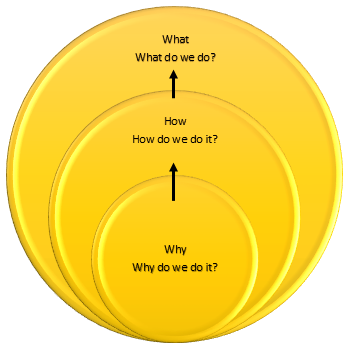How to Teach Your Students to Write the Perfect Pitch
As entrepreneurs, we can all benefit from the perfect pitch, the elevator kind that we can use when meeting someone new — someone who may turn out to be a beneficial new contact. The pitch needs to be impactful, and it must resonate with your listener. The best way to write the perfect pitch is to first understand that no one is interested in buying what you are selling. However, people will listen to your ideals and values — the ones that drive you and your business. Start with this premise and follow up with these four simple steps for crafting the perfect pitch:
Step one:
Watch Simon Sinek’s Golden Circle YouTube video.
As Sinek says, “people don't buy what you do; people buy why you do it.” When crafting the pitch, think about how your product is different from competitors’, and even more importantly, how you and your company are different from others. Why are you in this business? People can get multiple products or services from anywhere, but how do YOU differ from anyone else?
Step two:
Draw the Golden Circles and fill them in, focusing especially on the Why. Why do you sell your product or service? Then focus on the How. How do you do it? Then finally focus on the What. What is it that you do? Do you notice that the Why, the How, and the What perfectly coincide with pathos, logos and ethos, the three Aristotelian argumentative appeals? Pathos, emotional appeal, is the Why, because we are driven by our emotions to act based on our beliefs, values, and upbringing. Logos, logical appeal, is the How because it is the part of the brain that processes cause/effect and compare/contrast. Ethos is our credibility, our character, and our trustworthiness. It is the What because it is the words that we use to define ourselves based on our moral codes of judgement and identity.
Do you notice that the Why, the How, and the What perfectly coincide with pathos, logos and ethos, the three Aristotelian argumentative appeals? Pathos, emotional appeal, is the Why, because we are driven by our emotions to act based on our beliefs, values, and upbringing. Logos, logical appeal, is the How because it is the part of the brain that processes cause/effect and compare/contrast. Ethos is our credibility, our character, and our trustworthiness. It is the What because it is the words that we use to define ourselves based on our moral codes of judgement and identity.
Step Three:
Edit your pitch letter carefully, making sure to use active words over passive ones, and cutting out extras, so that your sentences are “clean as a bone,” as Orwell suggests for good writing.
Pay attention to the connotation of words, rather than their denotative meaning. Use a thesaurus to find compelling synonyms.
Step Four:
Practice your pitch in front of a mirror or with a friend you trust.
You want your listener to be as excited about your product or service as you are. You want to express energy and passion. Your pitch should convey a sense of excitement, discovery, and enthusiasm. Keep a slight smile as you practice your pitch.
Once you have created a basic elevator pitch, keep in mind that it will evolve as you learn to read your audience.
Here is a sample pitch that I created for myself:
I believe embedding entrepreneurship into liberal arts is the best way to prepare students for a future of work still to be defined. I do this by making my composition classes entrepreneurial in theme and my lessons experiential in teaching concepts. That is why I am a curriculum entrepreneur.
Conclusion
Simon Sinek says people don’t make decisions based on rational thought, but on the part of the brain that drives emotion: people buy from you because they “believe what you believe.” It is this shared belief that makes for lifetime customers. The perfect pitch involves communicating this belief in a succinct and pithy way.
Adjunct Faculty
Glendale Community College

